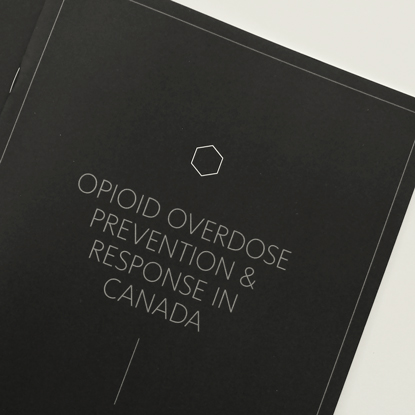[vc_row][vc_column width=”1/1″][vc_column_text]With the onset of winter, I’ve been reminiscing about the summer. Like many young Canadians, I spent the summer adventuring around my province, hiking, camping and enjoying the extra freedom the warm weather offers. This summer I was also lucky enough to attend a number of music festivals. I love festivals. Spending a weekend away, great music, camping with your friends, dancing until the wee hours under starry skies… there’s something magical and ethereal about the festival community that draws in so many attendees every year.
And yet, these festivals have a darker underbelly. “Party drugs” like ecstasy, ketamine and cocaine are common at music festivals, and their uncontrolled use can lead to serious consequences. This summer alone in Canada, almost 80 people were admitted to hospital after incidents with drugs at festivals. Two of these people died. They were only 20 and 22, respectively. Sadly, this is not an uncommon theme. Every year, kids go to festivals and every year kids die at festivals. The Canadian Centre on Substance Abuse reports that the largest number of ecstasy users are between the ages of 15-24. These are not dangerous criminals. Annie Trong-Le, 20, who died this summer of a recreational drug overdose, was a political science student at York and a regular volunteer in her community. These are normal kids from normal families. So what’s going on?
The popularity of music festivals is on the rise. Shambhala, an electronic music festival near Salmo, British Columbia capped its attendance at 10,000, which represents a tenfold increase since its 1998 inception. The Squamish Valley music festival drew in nearly 100,000 guests this year. The Basscoast music festival, formerly held in Squamish, scaled up two years ago, capping attendance and moving to Merritt, BC.
(Image placeholder)
This rise is, at least in part, due to the dramatic increase in popularity of Electronic Dance Music (or EDM) in the past several years. According to the International Music Summer Consumer report in 2012, $6.4 billion EDM industry is the fastest growing music genre in the US, with similar growth in Canada. Festivals that used to attract large rock acts are now drawing huge DJs like Skrillex and Deadmau5.
Synonymous with the EDM scene is MDMA, aka “molly” or ecstasy. MDMA is everywhere in popular culture. In Miley Cyrus’ hit song “We Can’t Stop”, she sings “la-di-da-da-d/We like to party/Dancing with molly/Doin’ whatever we want”. Madonna made waves this year, titling her new album the cheeky “MDNA”, and asking concert-goers at the Ultra music festival “Has anyone seen molly?” Having attended 3 festivals myself this summer, increased MDMA use was impossible to ignore. Festival dance floors that used to be littered with beer cups are now full of young people in neon taking pills. With the surge in EDM popularity, rave culture has come back in a big way, and despite a lack of data collection, my sense is that MDMA and recreational party drug use is on the rise.
The problem with this, ironically, is not that kids are taking MDMA, but rather that they are NOT taking MDMA. In it’s pure, non-contaminated form, MDMA increases release of the neurotransmitter serotonin in your brain leading to a feeling of ecstasy, trust and connectedness and, though hotly contested, evidence suggest that the effects of pure MDMA are unlikely to lead to death (and actually, some labs are even looking at the potential to use MDMA for therapeutic use). The problem is that MDMA, usually purchased as capsules or pressed tabs, is often laced with dangerous substances like speed, cocaine, or other MDMA derivatives, like the dangerous PMMA. These substances, especially when ingested unknowingly, can lead to heart attacks, hyperthermia, seizures and many other symptoms. Most lethal cases of party drug use are actually a result of users unknowingly ingesting dangerous unknown substances.
Most users of party drugs have no way of knowing what they’re taking. Even after many successful uses, a single dose of contaminated drugs can lead to unexpected and sudden death. Maintaining a staunch “anti-drug” approach is not preventing kids from taking drugs. And simply accepting that deaths are a consequence of festival culture is not suitable. We need better options to keep users safe – otherwise things are only going to get worse.
Some groups have already started taking control. At the Shambhala festival, AIDS Network Kootenay Outreach and Support Society (ANKORS) sets up a booth to provide free drug testing for unidentified substances (And it’s working — see below for their stats). The Trip Project, out of Toronto, and Dance Safe, out of San Francisco, do advocacy education and drug testing for EDM festival-goers to try and increase drug knowledge and safety. Many festivals have “sanctuary” spaces, where drug users feeling overwhelmed or uneasy can relax in a non-judgmental space, staffed by emergency medical professionals. Many festivals, though clearly stating that they don’t promote drug use, are clear about where to find help if something goes wrong. Harm reduction is bubbling up all around the edges of the party scene.
Small steps towards better harm reduction could make a big change. Improved access to testing kits at festivals and parties needs to become a norm. The University of Alberta is already developing quick drug testing kits, aimed for use by law enforcement to keep an eye on street drug makeup. Better drug testing could help weed out crooked dealers that lace their product, keeping users safer. Similarly, improved education about drug use in the home and school between youth and trusted adults can help kids make safer choices.
The truth is that the party scene is changing. Kids are dying. It’s time to start thinking about how we can keep them safer.[/vc_column_text][vc_row_inner][vc_column_inner width=”1/1″][divider line_type=”Small Line” custom_height=”.25em”][/vc_column_inner][/vc_row_inner][/vc_column][/vc_row][vc_row][vc_column width=”1/1″][vc_column_text]ANKORS compiles statistics every year outlining the results of their drug testing efforts at Shambhala Music Festival. The following are the stats from the 2013 festival:
| Total tests done | 2,254 | |
|---|---|---|
| Number of drugs disposed of after the test | 155 | (6.8%) |
| MDMA capsules that tested positive for MDMA | 1,302 | |
| MDMA capsules that tested negative for MDMA | 339 | |
| Failure rate of MDMA capsules | 21% | |
| Ketamine samples that tested positive for ketamine | 158 | |
| Ketamine samples that tested negative for ketamine | 63 | |
| Failure rate of ketamine samples | 29% | |
| Mystery substances | 91 | |
| PMMA | 77 |
[/vc_column_text][/vc_column][/vc_row]









